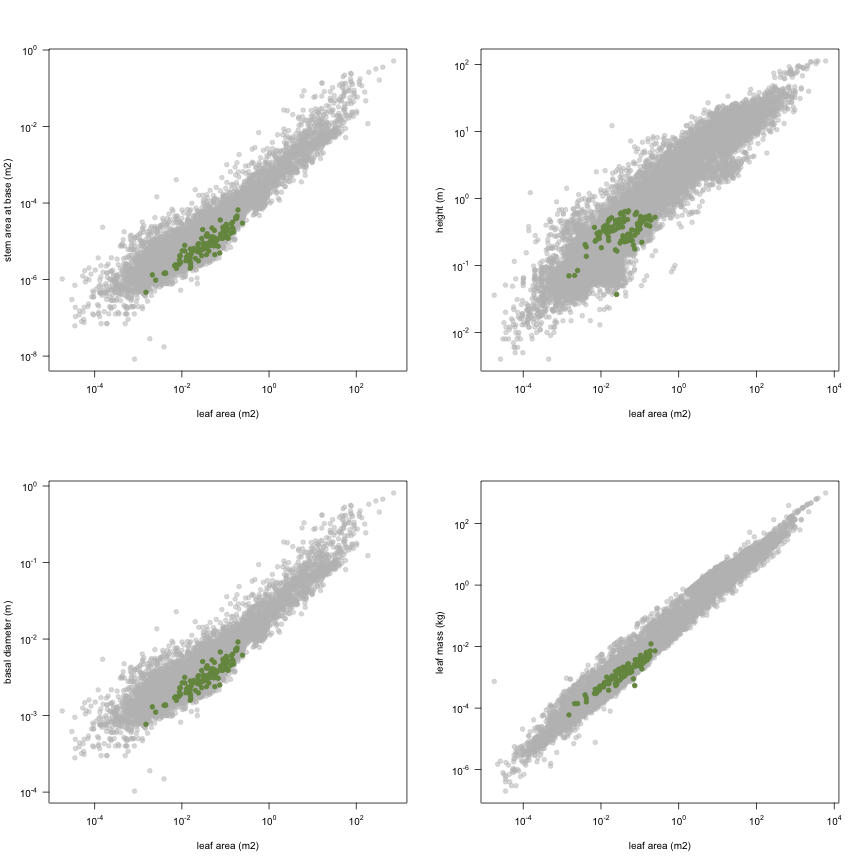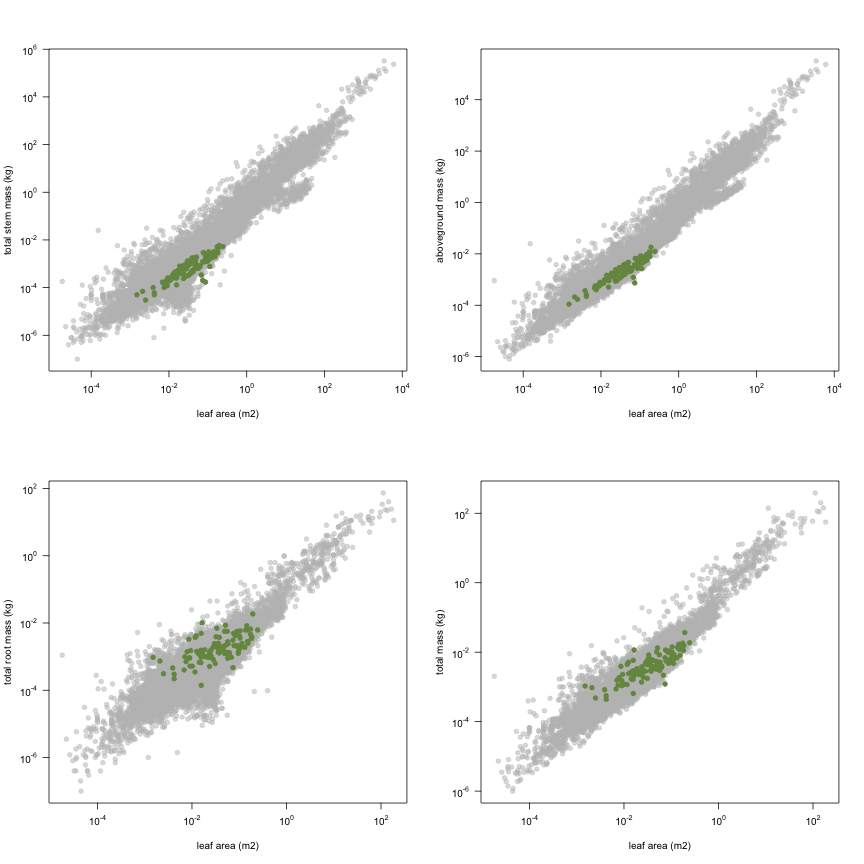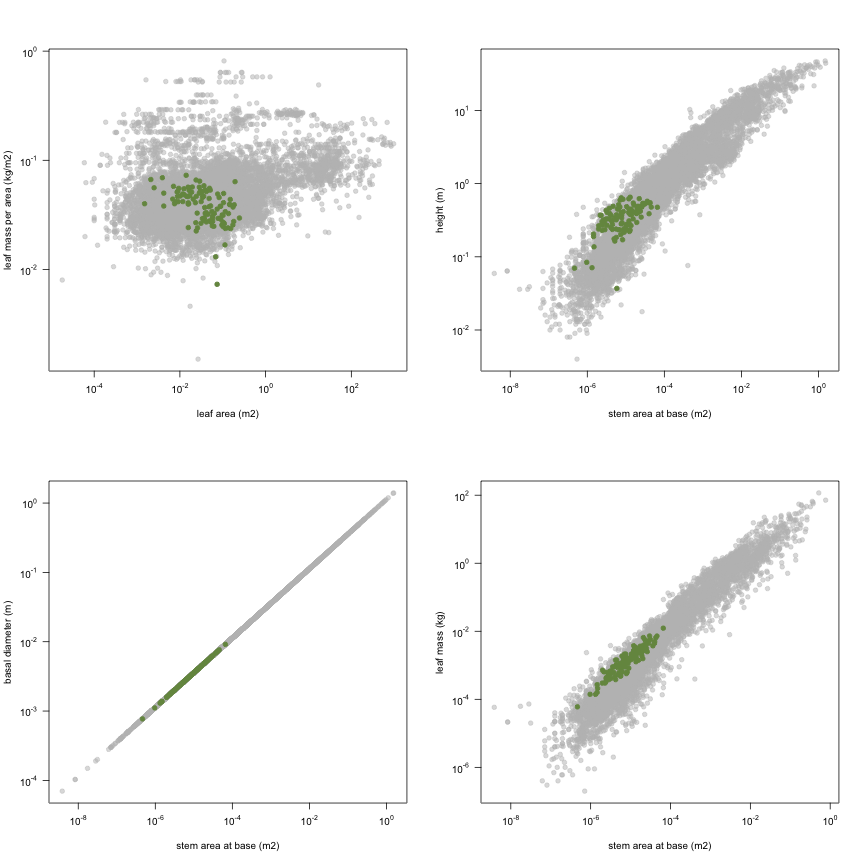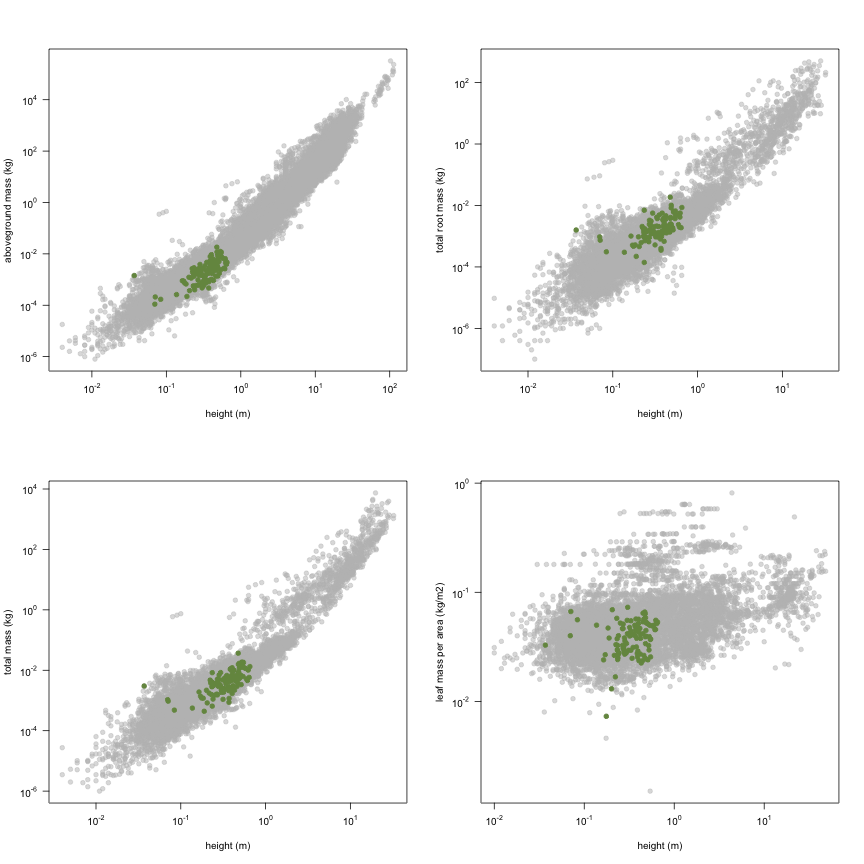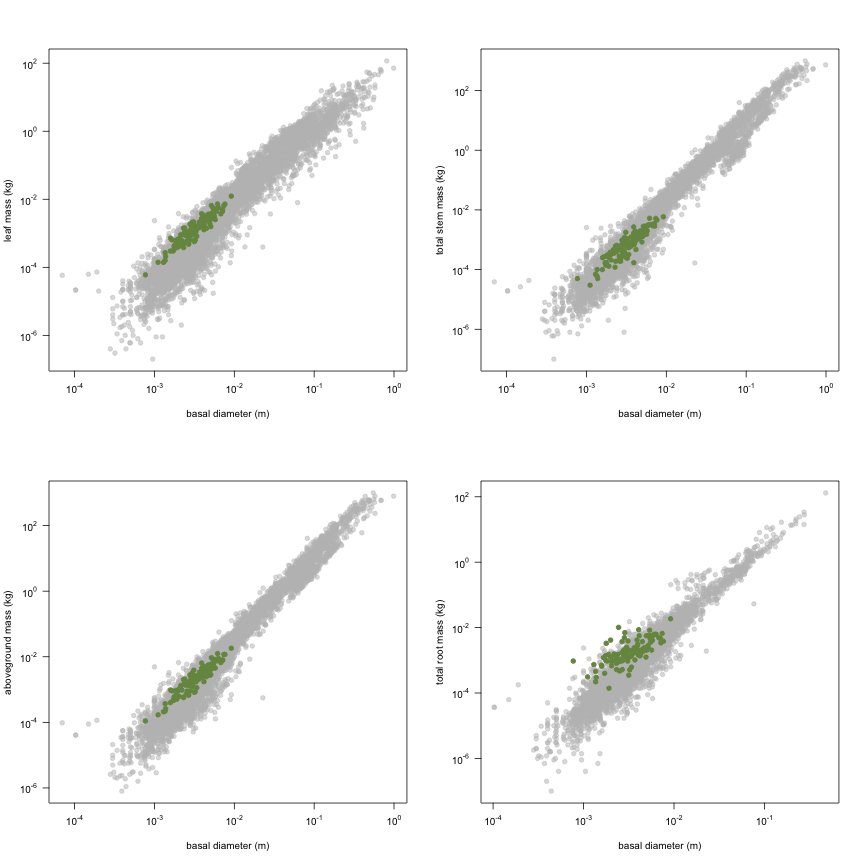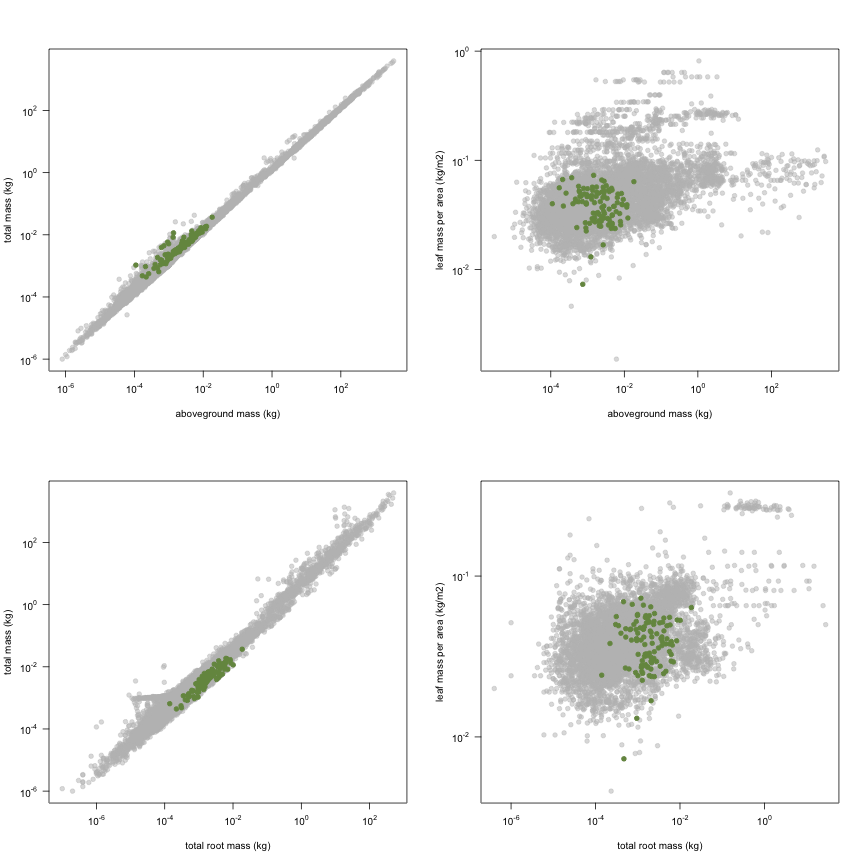-
Notifications
You must be signed in to change notification settings - Fork 19
Ghannoum2010b
Data contributor: David Tissue
Email: [email protected]
Address:
- Hawkesbury Insitute for the Environment, University of Western Sydney, Hawkesbury Campus, First Floor, Building L9, Locked Bag 1797, Penrith NSW 2751, Australia
Citation: Ghannoum O, Phillips NG, Sears MA, Logan BA, Lewis JD, Conroy JP and Tissue DT (2010). 'Photosynthetic responses of two eucalypts to industrial-age changes in atmospheric [CO2] and temperature.' Plant, Cell & Environment, 33(10), pp. 1671-1681.
DOI: 10.1111/j.1365-3040.2010.02172.x
Abstract: The unabated rise in atmospheric [CO2] is associated with increased air temperature. Yet, few CO2-enrichment studies have considered pre-industrial [CO2] or warming. Consequently, we quantified the interactive effects of growth [CO2] and temperature on photosynthesis of faster-growing Eucalyptus saligna and slower-growing E. sideroxylon. Well-watered and -fertilized tree seedlings were grown in a glasshouse at three atmospheric [CO2] (290, 400, and 650 yL/L), and ambient (26/18 degC, day/night) and high (ambient + 4 degC) air temperature. Despite differences in growth rate, both eucalypts responded similarly to [CO2] and temperature treatments with few interactive effects. Light-saturated photosynthesis (Asat) and light- and [CO2]-saturated photosynthesis (Amax) increased by ~50% and ~10%, respectively, with each step-increase in growth [CO2], underpinned by a corresponding 6-11% up-regulation of maximal electron transport rate (Jmax). Maximal carboxylation rate (Vcmax) was not affected by growth [CO2]. Thermal photosynthetic acclimation occurred such that Asat and Amax were similar in ambient- and high-temperature-grown plants. At high temperature, the thermal optimum of Asat increased by 2-7 degC across [CO2] treatments. These results are the first to suggest that photosynthesis of well-watered and -fertilized eucalypt seedlings will remain strongly responsive to increasing atmospheric [CO2] in a future, warmer climate.
The dataset includes records for 108 individuals from 1 species belonging to 1 family(ies), presenting 1 functional type(s), growing in 1 condition(s) within 1 major type(s) of habitat, with data included for the following variables:
| Variable | Label | Units | N | Min | Median | Max |
|---|---|---|---|---|---|---|
| latitude | Latitude | deg | 108 | -34 | -34 | -34 |
| longitude | Longitude | deg | 108 | 151 | 151 | 151 |
| a.lf | Leaf area | m2 | 108 | 0.0015 | 0.038 | 0.25 |
| a.stba | Stem area at base | m2 | 108 | 0.00000047 | 0.0000079 | 0.000066 |
| h.t | Height | m | 108 | 0.037 | 0.36 | 0.65 |
| d.ba | Basal diameter | m | 108 | 0.00077 | 0.0032 | 0.0092 |
| m.lf | Leaf mass | kg | 108 | 0.00006 | 0.0015 | 0.012 |
| m.st | Total stem mass | kg | 108 | 0.00003 | 0.00071 | 0.0059 |
| m.so | Aboveground mass | kg | 108 | 0.00011 | 0.0023 | 0.018 |
| m.rt | Total root mass | kg | 108 | 0.00014 | 0.0017 | 0.019 |
| m.to | Total mass | kg | 108 | 0.00044 | 0.0043 | 0.037 |
| ma.ilf | Leaf mass per area | kg m-2 | 108 | 0.0073 | 0.04 | 0.073 |
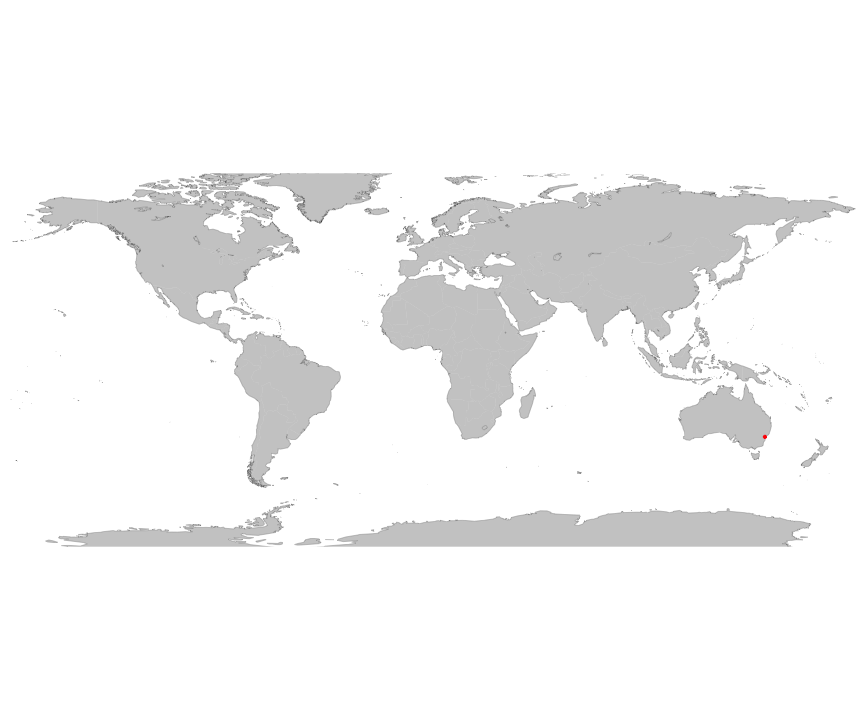
And locally within the country:

The sites sampled are:
| Location | Longitude | Latitude | Vegetation |
|---|---|---|---|
| University of Western Sydney, Richmond, NSW, Australia | 150.75 | -33.61 |
The growing conditions of sampled plants was:
| Location | Grouping | growingCondition |
|---|---|---|
| University of Western Sydney, Richmond, NSW, Australia | CO2 = 400; Temp = Amb | glasshouse |
| University of Western Sydney, Richmond, NSW, Australia | CO2 = 280; Temp = Amb | glasshouse |
| University of Western Sydney, Richmond, NSW, Australia | CO2 = 640; Temp = Amb | glasshouse |
| University of Western Sydney, Richmond, NSW, Australia | CO2 = 400; Temp = Elv | glasshouse |
| University of Western Sydney, Richmond, NSW, Australia | CO2 = 280; Temp = Elv | glasshouse |
| University of Western Sydney, Richmond, NSW, Australia | CO2 = 640; Temp = Elv | glasshouse |
| Species | Family | Pft |
|---|---|---|
| Eucalyptus saligna | Myrtaceae | evergreen angiosperm |
Sampling strategy: Two eucalyptus species (Eucalyptus saligna and Eucalyptus sideroxylon) were grown at full field capacity under a treatment combination of ambient or elevated temperature (26/18 C or 30/22 C) and subambient, ambient or elevated CO2 (280, 400 or 640 ppm). Seedlings were grown for 80 days from planting, at which time they were subjected to a destructive harvest of all biomass.
Leaf area: All leaves were measured in a leaf area meter (LI-COR 3100, LI-COR, Inc., Lincoln, Nebr.).
Height: Height was measured as the vertical distance from the pot surface to the highest apex.
Biomass: All stems, leaves and roots were destructively harvested 80 days after planting, and dried at 80degC for 48 h.
Growth environment: Glasshouse.
Year collected: 2008-2009
This is how the study Ghannoum2010b fits in the entire dataset (grey). each colour represents a species. A legend of species names with colours is included at the end for reports with 1 < n < 20 species.
